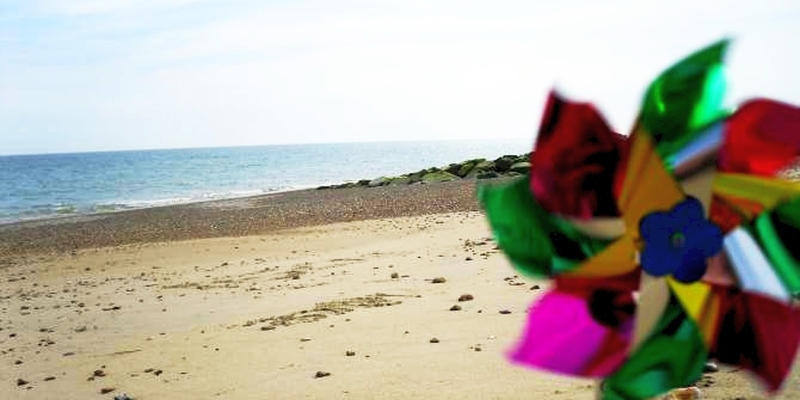
Marine Conservation Zones
It is over 60 years since the 1949 National Park Act was passed with the aim of providing a safe haven for wildlife, and enjoyment to countless millions of people who visit the parks each year and connect with nature. During the same period, some forms of Marine Protected Areas (MPAs) were created – for sea birds, sea habitats, wetlands and Sites of Special Scientific Interest – but the combined size of these areas is much less than those on land.
To redress the balance, the 2009 Marine and Coastal Access Act stated that a new type of protection called Marine Conservation Zones (MCZs) should be created to ensure that underwater wildlife flourishes, and to contribute to a well-managed network of MPAs in our seas.
Once designated, MCZs will conserve both marine species and undersea habitats, and not just the rare and threatened. Wildlife that could benefit ranges from short-snouted seahorses, starlet sea anemones, kaleidoscope jellyfish, undulate rays and colourful sunset cup corals, to the less well-known ocean quahogs and the trembling sea mat. Habitats that may be enhanced include honeycomb worm reefs, seagrass beds, chalk communities, native oyster beds, Celtic Sea relic sandbanks, fragile sponges, all the way inshore to estuarine rocky habitats.
What has made this ‘MCZ Project’ different from previous environmental legislation is that, right at the start, four regional groups were set up to involve and engage with a wide range of people who have an interest in the future of our seas. These four groups were tasked with recommending where MCZs might go, based on evidence and local knowledge. Recreational sea users – such as sailors and sea anglers – worked collaboratively alongside commercial sea users and conservationists to design locations for MCZs that will be as beneficial as possible for marine wildlife, whilst also taking people’s recreational and commercial interests into account. An independent Science Advisory Panel acted as a sounding board throughout the process as recommendations gradually took shape.
In September 2011, after two years’ dedicated hard work, the four groups of sea users made their final recommendations for MCZs and passed them on to Government. In total, there are 127 recommended MCZs (rMCZs) – covering a footprint of approximately 37,500km2. In addition there are 65 much smaller, but more highly protected “reference areas”, which occupy just 2% of this total area.
There are no set shapes and sizes for MCZs. The largest (approximately 5,800km2) is offshore in the far south west of UK territorial waters; while the smallest occupies less than half a square kilometre in the Aln estuary in Northumberland.
Now that this first stage of the MCZ Project has been completed successfully, there is still more work to do. The MCZ recommendations have been handed over to an independent Science Advisory Panel which has assessed the scientific evidence underpinning them. At the same time, the Government’s statutory nature conservation advisers – Natural England and the Joint Nature Conservation Committee (JNCC) – are producing impact assessments for each site to identify their potential environmental and socio-economic impacts. These will be provided to Defra (the Department for Environment, Food and Rural Affairs) in mid July 2012, alongside Natural England and JNCC’s own formal advice package.
The opportunity for everyone to have their say on the recommendations, to study the supporting documents – including the impact assessments – and to respond to them, takes place in December 2012 when Defra opens a formal public consultation. Ending in early 2013, the consultation will play a vital role in helping inform the Government’s decisions on designating individual MCZ sites. Depending on the responses to consultation, Ministers will decide on which MCZs to designate. As the Marine Minister Richard Benyon said recently: “It is important that we get this right. It is vital that we have an adequate evidence base for every site if we are to create successful well-managed MCZs. An adequately robust evidence base will be essential when we come to implement management measures.”
Government will begin designating MCZs in phases, with phase one planned for later in 2013. After MCZs are designated management measures for each site will be decided by relevant authorities – including Inshore Fisheries & Conservation Authorities and the Marine Management Organisation. These are likely to be different from site to site, reflecting different levels of usage and different environmental conditions. At this stage, it is too early to say which measures will be needed where and it will be at least another year before decisions on the first set of management measures are made.
Having focused on what’s coming up, it’s worth ending with a reminder that one MCZ exists already. This is Lundy, a rocky island lying 10 miles off the coast of North Devon where the Atlantic meets the Bristol Channel. Lundy became a voluntary marine nature reserve in 1971, gaining statutory status as a marine nature reserve 15 years later. With this protection already in place, the waters around Lundy were automatically designated as an MCZ in January 2010 due to the provisions of the Marine and Coastal Access Act. Lundy also recorded a first in 2003 when a section of Lundy’s waters were designated as England’s first No Take Zone.
Lundy is a very special place. Warm southern currents meet cooler northern waters, and the seas around the island create ideal conditions for a diverse and thriving marine environment – from grey seals and lobsters, to spectacular sponges and five different types of corals.
Mel Parker, a Natural England marine adviser, said: “Lundy is a pioneer site for marine conservation, and it can show people what a working MCZ is all about.”
To learn more, visit: www.lundymcz.org.uk
For further details please visit:
DEFRA or www.naturalengland.org.uk





